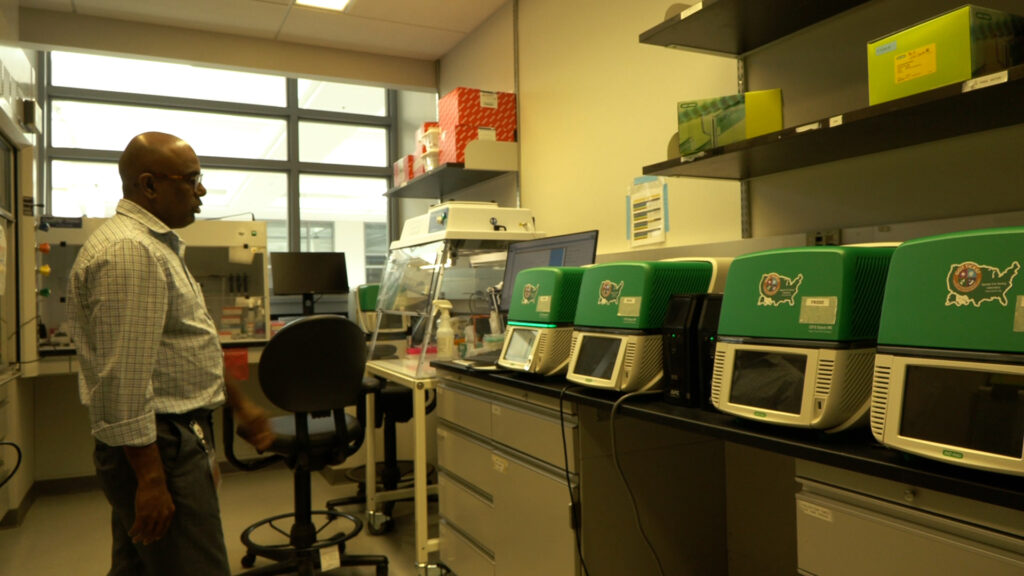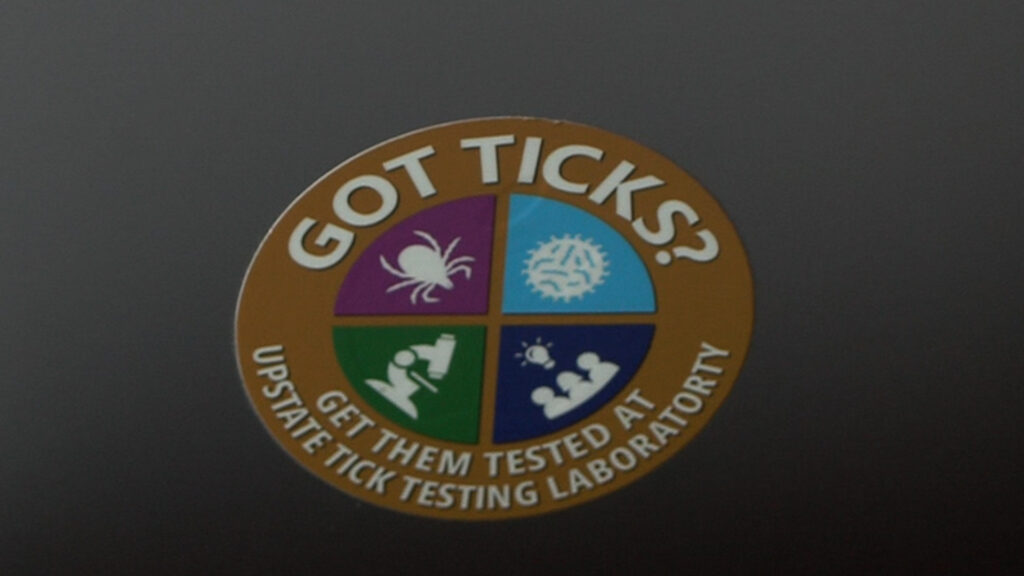SYRACUSE, N.Y. (NCC News) – As Central New Yorkers embrace the warmer weather, experts are seeing a significant rise in tick activity and the growing health risks that come with it.
According to Dr. Saravanan Thangamani, director of the Upstate Tick Testing Laboratory at Upstate Medical University, tick submissions have quadrupled in the past year. Residents across the region are sending in ticks they’ve encountered for testing, raising concerns about increased exposure and the potential for disease transmission.
“Compared to 2024 to 2025, I see a big increase in the number of ticks that humans encounter, so that is something that I found that is pretty surprising to me,” said Thangamani.

Even more concerning is the emergence of the Longhorned tick, a fast-spreading invasive species that experts say may be capable of transmitting new and uncommon illnesses.
Associate Professor of Medicine at Upstate Medical University, Dr. Kristopher Paolino said, “The Asian Longhorn tick that’s kind of invaded over the past 5 or 6 years, is rapidly spreading. It has the ability to transmit things that we have previously seen, and, it’s potentially seen,” said Dr. Kristopher Paolino, associate professor of Medicine at Upstate Medical University.
The Finger Lakes region, including parts of Central New York, currently sits at 3.3 on a 5-point tick risk scale, while Syracuse itself ranks slightly lower at 1.9. But numbers aside, the real worry lies in the types of diseases ticks are carrying.

While there’s currently no immediate risk to Central New Yorkers, the disease was detected in a Longhorned tick in Connecticut just last month, according to the Connecticut Agriculture Experiment Station.
“I have not seen a lot of cases or have heard anything that I would worry about here in New York state,” said Paolino.
Experts recommend the following steps to reduce your risk of tick bites:
- Use insect repellents
- Wear light-colored clothing and treat it with bug repellent
- Shower immediately after being outdoors
- Perform daily tick checks, especially after yard work, hiking, or camping

As the season continues, the Executive Director of CNY Lyme Disease and Tick-Borne Alliance Royale Scuderi urges the public to stay vigilant.
“I want people to not be afraid to go outside, but I just want them to be prepared, take the proper precautions right? I put on my sunscreen ever morning. but I also put on some tick repellent, you know, and I come in and do my tick check, I want it to become second nature,” said Scuderi.
VIDEO TRANSCRIPT: Surge in ticks this season surprises experts
Autumn Ryan (Anchor): As more people head outside for summer activities, experts are concerned with the number of tick to human interactions. Our Geraldine Paglia explains these warnings and how to be safe during the summer months.
Geraldine Paglia (Reporter): Thanks, guys. Now, as the weather gets warmer here, especially on a day like today. Experts’ main concern is the increase in human to tick interactions.
Paglia: Director of the Upstate Tick Testing Laboratory Dr. Thangamani has seen a significant update in the number of ticks submitted to the tick testing lab at Upstate Medical University.
Dr. Saravanan Thangamani (Director of the Upstate Tick Testing Laboratory): Compared to 2024 to 2025, I see a big increase in the number of ticks that humans encounter, so that is something that I found that is pretty surprising to me.
Paglia: In Central New York, the Finger Lakes region, which includes Syracuse, has the highest tick risk at 3.3 on a 5-point scale, and the central New York area is at one of the lowest at 1.9. At the tick testing lab at Upstate Medical University, ticks that have bitten humans are submitted for testing. The lab has seen the number of ticks quadrupled in the last year, and Dr. Kristopher Paolino, Assistant Professor of Medicine, explains how the cases of tick-borne diseases have been expanding.
Dr. Kristopher Paolino (Assistant Professor of Medicine at Upstate Medical University): Tick-borne diseases in general have been expanding their geographic range and the number of cases over the past several years. so you know the thing I most currently worry about in New York State and Central New York is Anaplasmosis.
Paglia: And in some extreme cases has cause death. more concerning is the longhorn tick that has the ability to spread new diseases.
Paolino: The Lonhorn tick, the Asian Longhorn tick that’s kind of invaded over the past 5 or 6 years, is rapidly spreading it has the ability to transmit things that we have not previously seen.
Paglia: Now, according to Connecticut Agricultural Experiment Station, the first evidence of the longhorned tick infected by a new disease, Ehrlichia Chaffeensis in the U.S. was reported back in may, now I ask Dr. Paolino about this, there is no concern as of righ now for Central New Yorkers, but with the quickness that ticks infect and spread this disease there could be a concern a growing concern. Live in Syracuse, Geraldine Paglia, NCC News.
